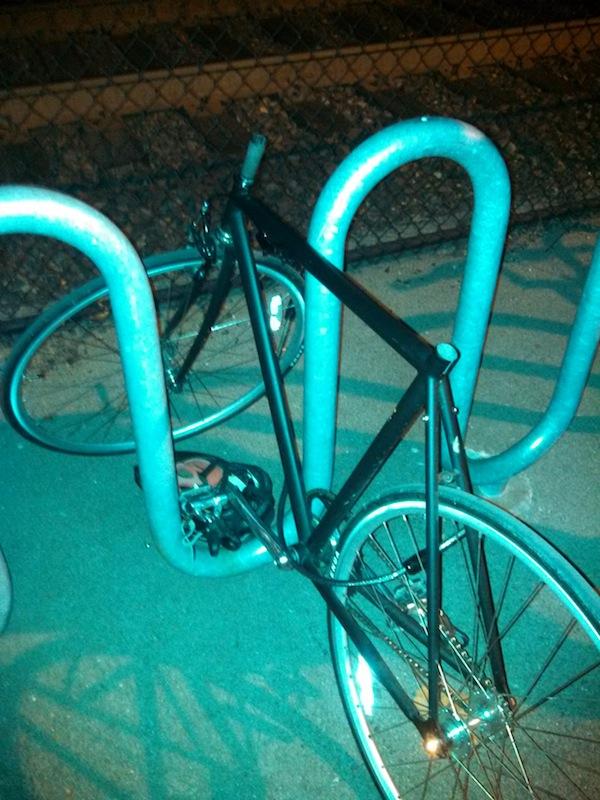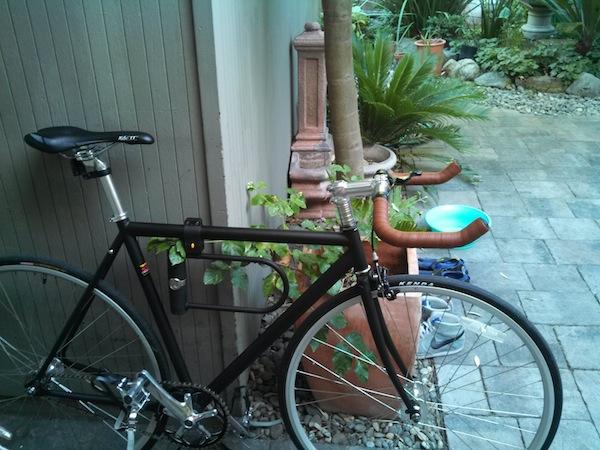
Palo Alto is such a quaint, friendly town that you’d think crime would be almost non-existent, and, seeing as Palo Alto is so incredibly bike-friendly, you’d think bike theft to be one of the least occurring crimes — something that happens once in a blue moon, perhaps. Well, think again.
This Veterans’ Day, I had parts stripped and stolen off of my bike in broad daylight while it was locked at the University Avenue Caltrain station. While I was initially shocked, this incident brought attention to me that, as a matter of fact, Palo Alto bike crimes are not uncommon at all.
According to Zach Perron of the Palo Alto Police Department, there have been 218 reported bike thefts within the last year. Bikes can and have been stolen almost everywhere in Palo Alto. Perron credited the number of bike thefts to how easy they are to commit and how hard they are to trace.
Sometimes, bikes are stolen because riders carelessly leave their bikes unlocked. Other times, bikes are stolen regardless of safety measures taken to secure them.
Palo Alto High School junior George Lu, who had locked his bike on campus, recounts having had his bike stolen on campus three weeks ago while he left it over the weekend.
“I thought my bike would be safe at Paly,” Lu said. “It turns out that Palo Alto, and especially Paly, is even more unsafe than I thought it was.”
As a result of this, Lu lost his main form of transportation and was set back a couple hundred dollars in the purchase of a new bike.
The sad truth is, bike crime cannot be prevented, but it can be minimized. While Lu’s loss was unfortunate, here are some measures you can take to reduce the chances of having your bike stolen:
1. Think twice before biking to your destination.
Don’t venture out and park your bikes in shady or high crime neighborhoods unless it is absolutely necessary. Try to scout out your final destination beforehand and make the call whether or not it would be a safe area to lock it in. If not, consider taking some alternative mode of transportation to reduce your risk of bike theft.
2. Always, always, always lock your bike and lock it well.
Bike locks are not made equally, and simply locking your bike just won’t cut it. Bike thieves are unafraid to cut wimpy bike locks, so don’t make it easy for them: use good quality locks to secure your bike. For maximum security, I recommend partnering a strong U-lock with a chain through the wheels of your bike to ensure your most-valuable bike components remain safe and sound.
Remember that to the eyes of a bike thief, your bike equates to cold, hard cash and can easily rake in hundreds of dollars through resale via Craigslist. Don’t make it easy for these crooks: lock before you walk.
3. Protect your unlockable bike parts.
Unfortunately, ensuring that your bike is properly locked is not the be-all-and-end-all of bike theft prevention. Even the most well-locked bikes are susceptible to having external accouterments stolen, such as handlebars, seats, seat posts and even chains.

To prevent against the loss of bike parts, Perron recommends taking a photo of your bike beforehand and registering your bike through the City of Palo Alto so that your bike and parts may be identified and returned to you if they are found. Bikes can be registered free of charge through any of the fire stations in the city of Palo Alto.
Furthermore, you can help prevent your parts from being stolen by removing all unsecurable parts from the bike, such as your seat post, after locking your bike and bringing them with you.
So, what happens if your bike actually gets stolen? What should you do?
If you witness a thief in the process of stealing your bike or someone else’s, don’t be too quick to be the “hero” and confront the crook. You don’t know what weapons or dangers the thief could bring and you could very well be risking your life through physical contact.
Instead, Perron advocates for bystanders to call 9-1-1 as soon as possible to report theft or dangerous activity.
“We encourage everyone to report suspicious behavior or activity to us any time by calling 9-1-1,” Perron said. “People loitering around bike cages and examining locked bikes while parking their pick-up truck with a bed full of bikes, for example, merits a 9-1-1 call right away.”
Perron also recommends recording the serial number of your bike, if it is registered, and a photo of the bike, if possible, so that you can provide this information to the police if your bike is indeed stolen. This helps to better trace and identify your bike.
Perron stresses the importance of recording one’s bike’s serial number.
“I don’t have the exact statistics on the number of cases where we’re able to reunite bikes with their owners, but unfortunately, it’s a small percentage,” Perron said. “Reunification is also complicated by the fact that many bike owners do not record the serial numbers of their bikes – so when we recover a bike that we believe is stolen, there’s no way to know for sure and no easy way to determine who the rightful owner is.”
By following the steps outlined to effectively lock and protect your bike, you can help to minimize your chances of having your bike and parts stolen and increase your chances of recovering your bike if it is stolen. Now you can park your bike with peace in mind. Don’t be crank-y: geared up with this new knowledge you can chain-ge your locking habits for good and pedal to the metal!

